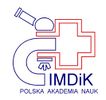Help for ResiCon on the Essentia Proteomica server
ResiCon calculates geometrical variability for pairs of amino acids to constructs
a contact matrix, for which a spectral clustering is carried out. These clusters correspond
to dynamic domains — quasi-rigid structural parts of the a protein molecule.
Structure
PDB or SCOP code
Code of a protein structure in PDB or SCOP databases. PDB codes are composed of 4 alphanumerical characters (e.g. 1m55), and can be followed by a letter denoting a chosen chain (e.g. 1m55A) (otherwise the whole molecule will be used in an alignment). Codes of SCOP domains are 7 characters long, and begin with letter d (e.g. d1m55a_).
File
A properly formatted all atom PDB file should be uploaded. Coordinates of sidechain atoms are required to determine geometrical centers of residues which are used to compute inter-residue contacts. Structures having fewer than 5 residues are considered invalid. Multiple chains are accepted although submitting entire crystal cells with internal symmetries may significantly increase the computation time providing multiple insignificant alignments.
α, β
Positive value parameters needed for constructing the contact matrix;
they scale the strength of contacts between amino acids.
Too large values of α and β lead to strong contacts regardless of configurational changes.
Too small values result in weak contacts even for stable pairs of amino acids.
As default, α is set to the mean geometrical variability.
β is calculated as reprocical of the standard deviation of the geometrical variability.
Hinge threshold
Controls how large the hinges between dynamic domains are.
Hinges are comprised of amino acids which do not decisively belong to any dynamic domain (memberships below the hinge threshold), and which are sequentially between domains.
Threshold below the default value 0.65 will yield longer hinges (conversely, a higher threshold will produce shorter hinges).
Max. number of domains
The maximal number of clusters considered in the analysis.
This parameter significantly extends the computational time and is, therefore, limited to 10.
Number of configurations to render
The number of images produced for each partitioning into dynamic domains.
If the number of models is lower than the query, the number of images will be equal to the number of models.
Note, that a higher number of images takes more time to render.




